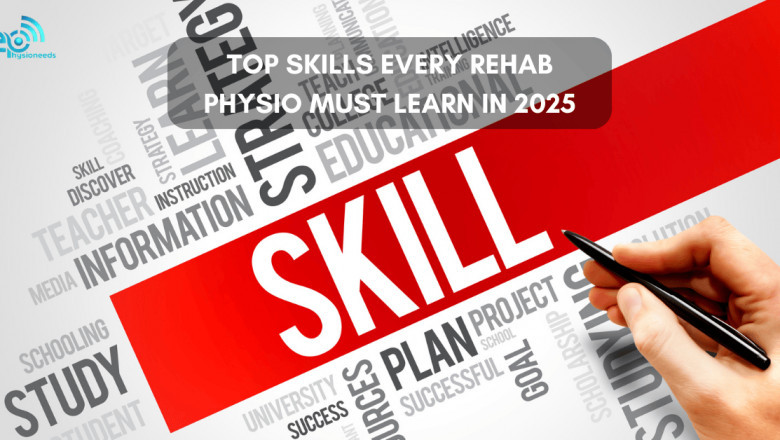views
As rehabilitation continues to evolve, physiotherapists need to stay current with new tools and evidence-based practices. The year 2025 is set to bring even more demand for advanced clinical skills, manual techniques, and holistic approaches. Here’s a list of the top skills every rehab physio should aim to master.
1. Dry Needling for Myofascial Pain
Dry Needling remains one of the most in-demand techniques for musculoskeletal pain relief. Learning it allows physios to effectively manage trigger points, reduce inflammation, and improve muscle function.
2. Instrument Assisted Soft Tissue Mobilization (IASTM)
Using specially designed tools, IASTM helps treat soft tissue restrictions and promote healing. It’s a must-learn technique for therapists dealing with scar tissue, adhesions, or chronic pain.
3. Trigger Point Therapy
Chronic pain patients often have myofascial trigger points. Mastering this therapy can help you identify and release these pain spots efficiently—offering faster results to your patients.
4. Cupping Therapy
This ancient technique is making a strong comeback in modern physio settings. With benefits like improved blood flow, faster muscle recovery, and reduced pain, cupping therapy is here to stay.
5. Muscle Energy Techniques (MET)
METs are highly effective for improving joint mobility and reducing muscle tension. They’re gentle, safe, and useful for a wide variety of patients—including elderly and post-op cases.
6. Clinical Anatomy & Palpation Mastery
A strong understanding of anatomy remains foundational. In 2025, more physios are expected to deepen their clinical palpation skills to make faster, more accurate assessments.
7. Fascial Release Techniques
Fascia is now recognized as a major player in pain and movement restriction. Learning how to address fascial tension with hands-on methods can improve treatment outcomes dramatically.
8. Functional Movement Training
Rehab isn’t just about pain relief—it’s about restoring functional capacity. Understanding human movement patterns and correcting dysfunctions should be a top priority.
9. Evidence-Based Practice
Physios are expected to stay updated with the latest research and clinical guidelines. The ability to apply evidence-based strategies to everyday rehab cases sets top practitioners apart.
10. Digital Tools & Online Learning
With the rise of tele-rehab and online certifications, physios who can effectively use digital tools for patient care, learning, and skill development will lead the profession in 2025.
Conclusion
Physiotherapy is advancing fast. To stay competitive and deliver exceptional care, rehab physios must continuously upskill. Whether it's dry needling, IASTM, or clinical reasoning—choosing the right techniques in 2025 will elevate your practice and results.
FAQs
Q1: Are these techniques suitable for new physiotherapists?
Yes, most of these skills can be learned after your BPT through certified courses. They help build confidence and enhance patient outcomes.
Q2: Which skill is most useful for treating back pain?
Trigger point therapy and dry needling are highly effective for back pain, especially when muscle knots and tension are involved.
Q3: Where can I learn these skills online?
Platforms like E-Physioneeds offer internationally accredited courses in dry needling, IASTM, cupping therapy, and more.
Q4: Is dry needling safe for beginners?
Yes, when taught under professional supervision with certification. It’s crucial to understand anatomy and safety protocols.
Q5: Do these techniques require physical setup?
Most require basic tools (e.g., cups, IASTM instruments) but can be easily integrated into your practice with minimal investment.






















Comments
0 comment